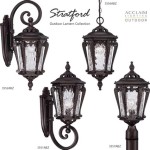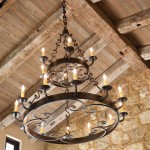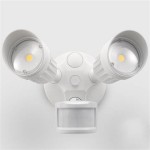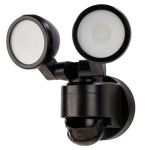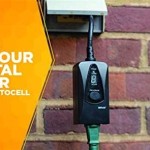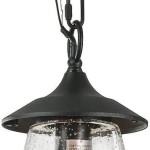How To Do Low Voltage Outdoor Lighting
Low voltage outdoor lighting offers a safe, energy-efficient, and aesthetically pleasing way to illuminate landscapes, walkways, patios, and architectural features. Unlike mains voltage (120V or 240V) systems, low voltage systems typically operate at 12V or 24V, reducing the risk of electrical shock and simplifying installation. The following guide provides a detailed explanation of the process of installing a low voltage outdoor lighting system, covering planning, component selection, installation techniques, and troubleshooting.
Planning Your Low Voltage Lighting System
The initial step in any outdoor lighting project is thorough planning. This stage involves identifying the areas you wish to illuminate, determining the desired lighting effects, and calculating the necessary power requirements. Failing to plan adequately can lead to insufficient lighting, wasted materials, and potential rework.
Begin by creating a sketch of your property and outlining the areas you want to highlight. Consider walkways, driveways, gardens, patios, decks, trees, and architectural details. Think about the specific purpose of the lighting in each area. For example, walkways require functional lighting for safe navigation, while gardens may benefit from accent lighting to showcase plants and flowers.
Determine the type of lighting fixtures you want to use. Common options include path lights, spotlight, floodlights, well lights, and deck lights. Each type serves a different purpose and produces a unique lighting effect. Path lights are designed to illuminate walkways and driveways, while spotlights and floodlights are used to highlight specific features, such as trees or architectural elements. Well lights are installed in the ground and used to up-light trees and shrubs, creating a dramatic effect. Deck lights are typically smaller and used to illuminate deck railings and steps.
Consider the color temperature of the light. Warm white light (2700K-3000K) creates a cozy and inviting atmosphere, while cool white light (4000K-5000K) provides brighter and more focused illumination. Choose a color temperature that complements the landscape and architectural styles.
Estimate the number of fixtures needed for each area. This will depend on the size of the area, the type of fixtures, and the desired level of brightness. Overcrowding an area with too many lights can result in a harsh and unnatural appearance, while too few lights can leave areas poorly illuminated.
Calculate the total wattage required for your lighting system. This is crucial for selecting the appropriate transformer. Add up the wattage of each individual fixture to determine the total wattage. It is generally recommended to choose a transformer that has a wattage rating at least 20% higher than the total wattage of your lighting system. This provides a buffer and prevents the transformer from being overloaded.
Consider future expansion when selecting the transformer. If you anticipate adding more lights to your system in the future, choose a transformer with sufficient capacity to accommodate the additional load.
Once the lighting plan is finalized, create a detailed wiring diagram showing the location of each fixture, the transformer, and the wiring paths. This diagram will serve as a roadmap during the installation process.
Selecting Components for Your Low Voltage Lighting System
Choosing high-quality components is essential for ensuring the longevity and reliability of your low voltage lighting system. The key components include the transformer, wiring, and lighting fixtures. Compromising on quality can lead to frequent repairs, premature failure, and potential safety hazards.
The transformer is the heart of the low voltage lighting system. It converts the mains voltage (120V or 240V) to the low voltage (12V or 24V) required by the lighting fixtures. Transformers are available in a range of wattage ratings to accommodate different system sizes. When selecting a transformer, consider the total wattage of your lighting system, the desired voltage (12V or 24V), and any potential for future expansion.
Low voltage transformers come in two main types: magnetic and electronic. Magnetic transformers are more robust and reliable but are generally larger and heavier. Electronic transformers are smaller and lighter but may be more susceptible to damage from power surges. Consider the pros and cons of each type before making a decision.
For outdoor wiring, use low voltage landscape lighting cable, also known as direct burial cable. This type of cable is designed to withstand the elements and is suitable for direct burial in the ground. Avoid using indoor extension cords or other types of cable that are not rated for outdoor use.
The gauge of the low voltage cable is crucial for ensuring proper voltage delivery to the lighting fixtures. The gauge refers to the thickness of the wires. Thicker wires (lower gauge numbers) can carry more current over longer distances without significant voltage drop. Use a voltage drop calculator to determine the appropriate gauge for your cable runs. Longer cable runs and higher wattage fixtures require thicker gauge wires.
Choose lighting fixtures that are specifically designed for outdoor use and are rated for wet locations. Look for fixtures made from durable materials such as cast aluminum, brass, or copper. Avoid fixtures made from plastic or other materials that may degrade quickly in the sun and weather.
Consider the type of bulb or LED used in the lighting fixtures. LED bulbs are more energy-efficient and have a longer lifespan than traditional halogen bulbs. They also produce less heat, making them safer to use in enclosed fixtures. Choose LED bulbs with a color temperature that complements the landscape and architectural styles.
Ensure you have the necessary connectors and accessories for your lighting system. These include wire connectors, cable stakes, and fixture mounts. Use weatherproof connectors to protect the wiring from moisture and corrosion. Cable stakes are used to secure the low voltage cable to the ground.
Installing Your Low Voltage Lighting System
Proper installation is crucial for ensuring the safety and performance of your low voltage lighting system. Following safety guidelines and using appropriate installation techniques can prevent electrical hazards, damage to the lighting fixtures, and premature failure of the system.
Before starting any electrical work, always disconnect the power supply to the transformer. This prevents the risk of electrical shock. Locate the circuit breaker that controls the transformer and turn it off. Test the circuit to ensure that the power is completely off before proceeding.
Install the transformer in a protected location, such as inside a garage, shed, or weatherproof enclosure. Avoid installing the transformer in direct sunlight or in areas that are prone to flooding. Ensure that the transformer is properly grounded according to local electrical codes.
Run the low voltage cable from the transformer to each of the lighting fixtures. Bury the cable at least 6 inches deep to protect it from damage. Use a shovel or trenching tool to create the trenches. Avoid running the cable over sharp objects or through areas where it could be easily damaged.
Connect the low voltage cable to each of the lighting fixtures using weatherproof connectors. Ensure that the connections are secure and properly sealed to prevent moisture from entering. Follow the manufacturer's instructions for connecting the cable to the fixtures.
Position the lighting fixtures according to your lighting plan. For path lights, space them evenly along the walkway or driveway. For spotlights and floodlights, aim them at the features you want to highlight. For well lights, bury them in the ground around trees and shrubs.
Secure the lighting fixtures to the ground using stakes or other appropriate mounting hardware. Ensure that the fixtures are stable and will not be easily knocked over. Adjust the angle of the fixtures to achieve the desired lighting effect.
Once all the fixtures are connected, turn on the power supply to the transformer. Test each of the fixtures to ensure that they are working properly. If any of the fixtures are not working, check the connections and wiring for any problems.
Adjust the position and angle of the lighting fixtures to fine-tune the lighting effects. Experiment with different angles and intensities to achieve the desired look. Consider using dimmers to control the brightness of the lights.
Regularly inspect your low voltage lighting system for any signs of damage or wear. Check the wiring, connectors, and fixtures for corrosion, cracks, or other problems. Replace any damaged components immediately to prevent further damage or safety hazards.
Troubleshooting Common Issues in Low Voltage Lighting Systems
Even with careful planning and installation, issues can arise in low voltage lighting systems. Understanding common problems and troubleshooting techniques can help maintain the system's performance and prevent costly repairs. Addressing issues promptly can also prevent minor problems from escalating into more significant ones.
If some or all of the lights are not working, the first step is to check the transformer. Ensure that the transformer is receiving power and that the output voltage is correct. Use a multimeter to measure the voltage at the transformer output terminals. If the voltage is too low or zero, the transformer may be faulty and need to be replaced.
Check the circuit breaker or fuse that controls the transformer. If the breaker has tripped or the fuse has blown, reset the breaker or replace the fuse. If the breaker trips or the fuse blows repeatedly, there may be a short circuit in the wiring or a problem with the transformer.
Inspect the wiring for any signs of damage, such as cuts, kinks, or corrosion. Damaged wiring can cause short circuits, voltage drops, and other problems. Repair or replace any damaged sections of wiring.
Check the connections between the wiring and the lighting fixtures. Loose or corroded connections can cause intermittent lighting or complete failure. Clean the connections and tighten them securely. Consider using dielectric grease to protect the connections from moisture and corrosion.
If a single light is not working, check the bulb or LED. Replace the bulb or LED with a new one. If the new bulb or LED does not work, there may be a problem with the fixture itself.
Water intrusion can cause corrosion and electrical problems in low voltage lighting systems. Ensure that all connections and fixtures are sealed properly to prevent water from entering. Consider using weatherproof enclosures for the transformer and other sensitive components.
Voltage drop can be a common issue in long cable runs. This occurs when the voltage decreases as it travels along the cable, resulting in dim or flickering lights. To minimize voltage drop, use thicker gauge wire and keep cable runs as short as possible.
If the lights are too bright, consider using dimmers to control the brightness. Dimmers allow you to adjust the lighting intensity to create the desired atmosphere. Ensure that the dimmer is compatible with the type of lighting fixtures you are using.
Animals can sometimes damage low voltage lighting systems by chewing on the wiring or digging around the fixtures. Protect the wiring by burying it deep in the ground and using cable stakes to secure it. Consider using animal-resistant cable or installing a fence to keep animals away from the lighting system.

How To Install Low Voltage Outdoor Landscape Lighting 1000bulbs Blog

Planning Your Low Voltage Outdoor Landscape Lighting 1000bulbs Blog

Outdoor Low Voltage Lighting Diy Family Handyman

What Is Low Voltage Landscape Lighting Mll Blog

How To Install Low Voltage Outdoor Landscape Lighting The Garden Glove

3 Must Haves For Installing Low Voltage Landscape Lighting Ideas Advice Lamps Plus

The Easiest Way To Install Low Voltage Landscape Lighting Abby Organizes

Outdoor Low Voltage Lighting How To Install The Money Pit

Helpful Hints On Low Voltage Landscape Lighting Transformers

Low Voltage Lighting Info Tips Destination Flip The Switch
Related Posts
